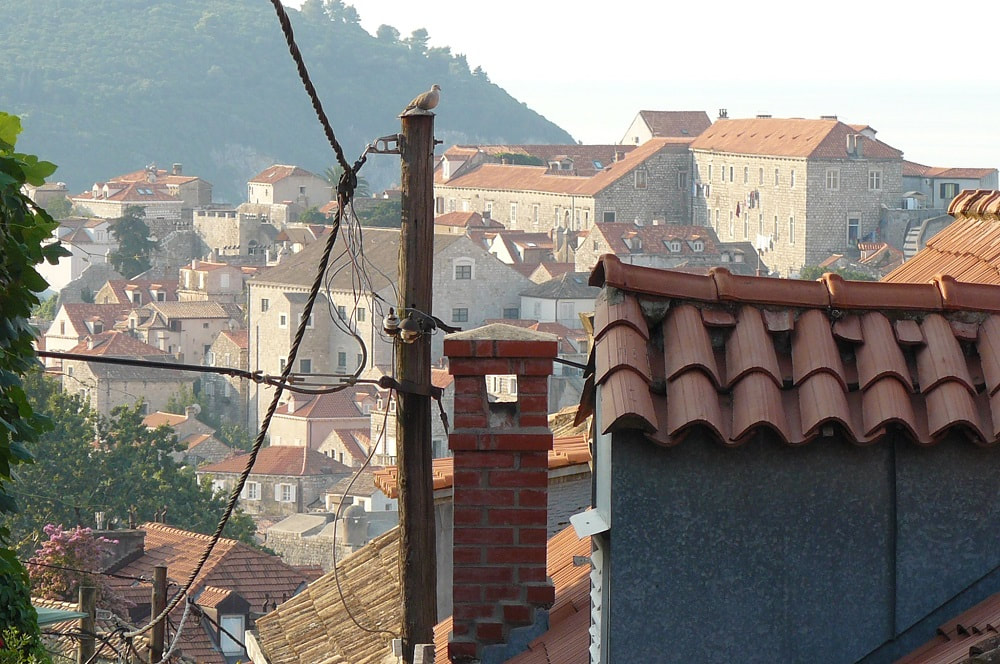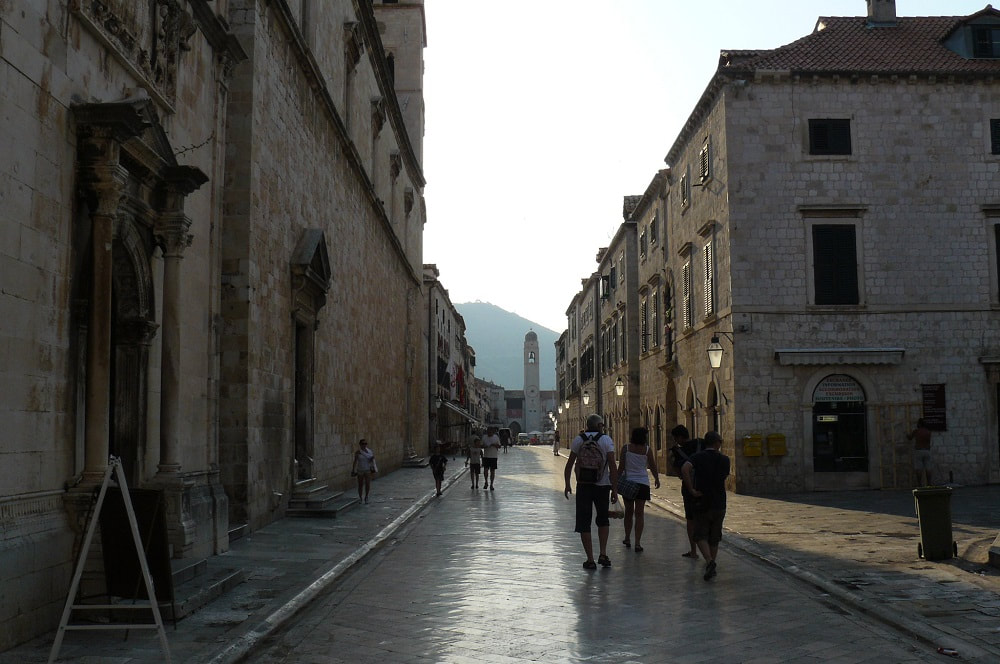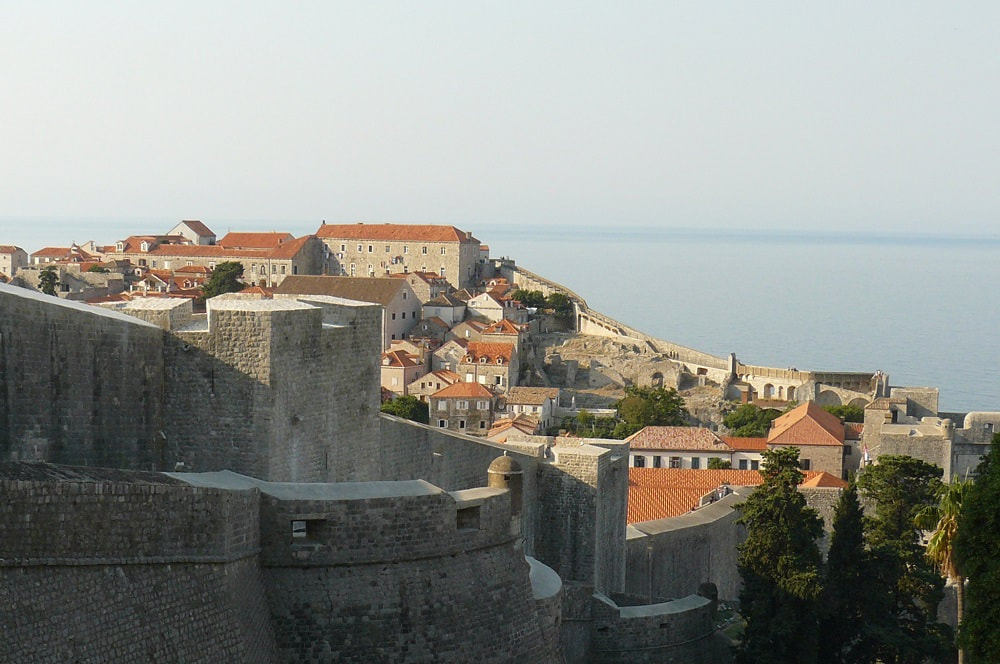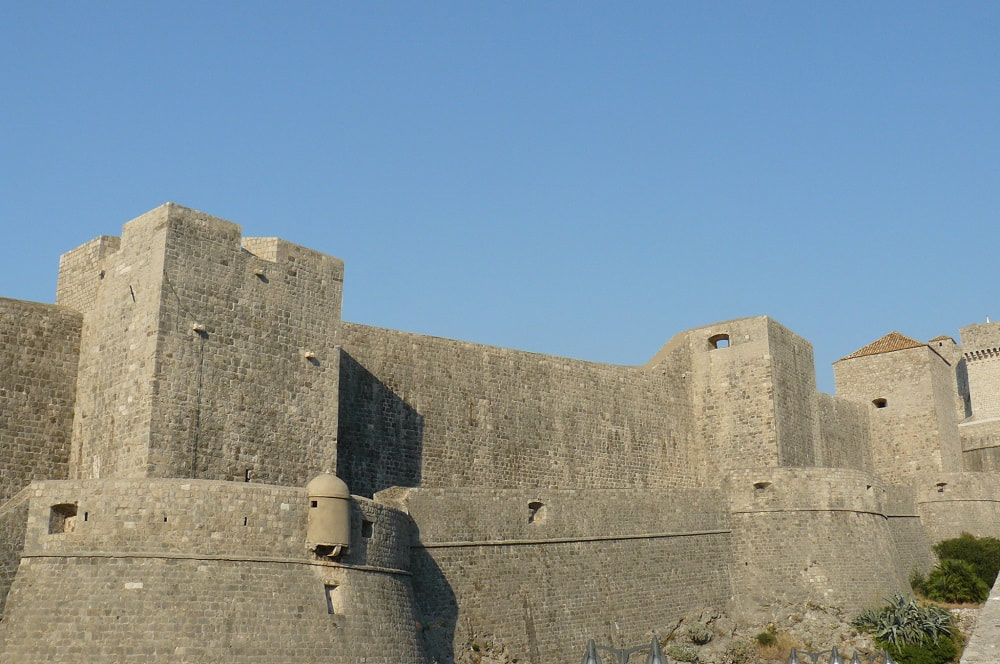The old, completely walled fortress city is on the UNESCO World Heritage list. And very rightfully so. Moreover, the sky above the city is coloured blue for more than 300 days a year thanks to the mild Mediterranean climate. Dubrovnik is a beautiful open-air museumIt's no longer noticeable that the historic centre of Dubrovnik was heavily damaged during the Croatian War of Independence in 1991, when it was shelled by the Yugoslav army from the mountains. About 300 civilians and soldiers died. Signs at the entrance of the city give an idea of the war damage at that time. International outrage was great and the city received considerably more foreign financial aid for its restoration than other cities in the region. Dubrovnik is a beautiful open-air museum, but a very lively one, with palaces, churches, monasties and beautiful old houses made of light beige stone with red roof tiles, balconies full of planters and flower pots, and lines of colourful laundry. The Pile Gate is the main entrance to the old city. In the summer, you can see city guards in traditional costumes standing here in the mornings and evenings. In front of the baroque Church of St. Blaise, built between 1706 and 1714, you will find the magnificent statue of the medieval knight Roland, with a sword and shield in his hand, in the centre of Luža Square. This patron saint of Dubrovnik is said to have helped the city to rid itself of the Arabs in the 9th century. Luža Square has always been the centre of public life in Dubrovnik. Other historical monuments include the Franciscan monastery with a beautiful 14th-century cloister, one of the oldest intact pharmacies in Europe and the separate Doge's Palace. The old harbour was already in use when the Levantines sailed here in the 7th century. The many patrician houses and palaces with red roofs date back to the 17th century. The entire city is a UNESCO World Heritage siteThroughout the city, fountains have been built that receive their water, which is fed by sixteen reservoirs, from mountain springs. One of these beautiful fountains is the Onofrio Fountain. It was built in 1438 by Onofrio della Cava from Naples to celebrate the completion of the 12-meter-long aqueduct to the city. The water that flows from the mouths of the various sculpted gargoyles around the dome is gratefully used in the summer. The broad main street Placa Stradun, with its smoothly worn beige stones, is comparable to a small Rambla full of boutiques and souvenir shops, but without facade advertising or distractions. After all, the entire city is a UNESCO World Heritage site. Before the earthquake of 1667, there would have been beautiful palaces on either side. Afterwards, the same and equally high, solid houses were built in a simple baroque style and with shops on the ground floor. A highlight of a visit to the city is a walk along the city walls, which were built between the 8th and 16th centuries. The picturesque route is best taken in the evening or morning during the summer, when it's slightly cooler and you can take better photos of all the photogenic views. Be sure to take your time. The city walls are almost two kilometres long. On the seaside, the walls are between 1.5 and 3 metres thick, and on the land side, they are a whopping 4 to 6 metres thick. In some places, they are 25 metres high. The construction was a major investment, but the fortifications proved to be of vital importance to the city many times. Nowadays, the residents still benefit from it, as it is precisely because of the medieval fortification that Dubrovnik is such an attractive city for tourists. This metre-high and wide rampart made the most impression on me and will forever remain imprinted on my mind. Hanan Scheers I travel the world to find unexpected stories. 6 September 2016
updated 6 April 2023 Comments are closed.
|
InSite Magazine is created by Just Hanan. We want to show you a world full of culture and lifestyle, and try to give you lots of international travel inspiration.
InSite Magazine Lifestyle Culture Travel Active Foodie Music Visuals Destinations Europe Asia Africa North America South America Oceania More+ home Our team |
|
We respect your privacy and will only reach out when we have something important and exiting to share! - Kami menghormati privasi anda dan hanya akan menghubungi anda jika kami punya sesuatu yang penting dan menarik untuk dibagikan!
|











